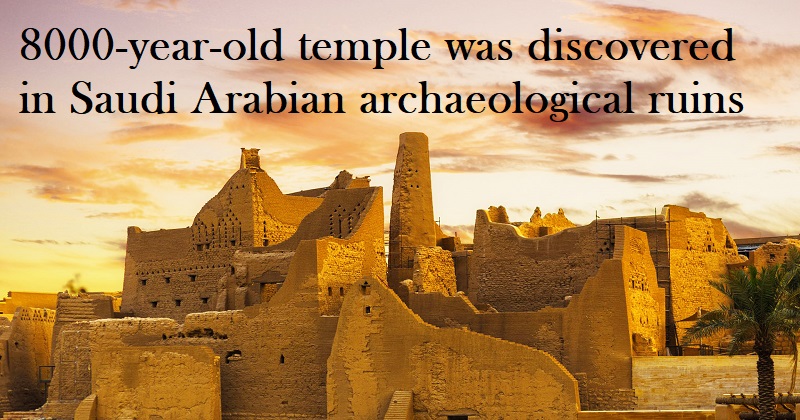
The Saudi Heritage Commission discovered an 8000-year-old archaeological site in Al-Faw, south-west of Riyadh, Saudi Arabia. A Saudi-led multinational team of archaeologists used cutting-edge technology to conduct a thorough survey of the site. According to the Saudi Press Agency, the study used high-quality aerial photography, guided drone footage using ground control points, a topographic survey, remote sensing, ground-penetrating radar, laser scanning, and geophysical survey, as well as extensive walkover surveys and sondages throughout the site (SPA).
The remains of a stone temple and parts of an altar were among the many discoveries at the site, with clear indications that a life of ceremonies, worship, and rituals was once integral to the lives of Al-Faw locals. The rock-cut temple is located on the outskirts of Mount Tuwaiq, also known as Khashem Qaryah, east of Al-Faw.
The new technology also enabled the detection of 8,000-year-old Neolithic human settlements, as well as 2,807 graves from various periods scattered throughout the site and documented and classified into six groups. The ground was covered in devotional inscriptions that revealed the religious beliefs of the Al-Faw people. An inscription in the Jabal Lahaq sanctuary invoking the god Kahal, the deity of Al-Faw, by W H B L T (Wahb Allat) from the family of M L H T (Malha), Guerra residents (the city of Al-Jarha).
Aside from cultural riches, the site confirms the existence of a complex, aesthetic, and well-planned city with foundations of four monumental buildings, corner towers, internal plans, and open-air courtyards. The archaeological study also uncovered an intricate irrigation system that included canals, water cisterns, and hundreds of pits in the world’s most arid lands and harsh desert environments.
For the past 40 years, the archaeological area of Al-Faw has been the focus of archaeological research. The findings of the studies had been published in seven book volumes over time. There had previously been mentions of cultural life at Al-Faw, citing residential and market areas, temples, and tombs, but the new discoveries are far more comprehensive in their findings.
More importantly, the Al-Faw site discoveries show that a culture of temples, rituals, and idol worship predated the monolithic, non-idol worshipers, anti-temple practices of Islam that exist there today. These discoveries may also call into question the widely held belief that the Islamic conquest of Arabia civilized its desert people.

Post Your Comments